Of the 19 men’s teams at the Tour Down Under this year, one stands apart from the rest. No, not because they’ve got superstars on the team. Nor because they’re riding the most expensive bikes in the field. In fact – they’ve got neither of those attributes. They’re effectively the lowest team on the totem pole this year and the team with the least number of sponsors – let alone big time sponsors.
But UniSA-Australia does have one thing none of the other teams have at this race: Live tracking of all the riders, including power, heart rate, and speed data. They’ve got it not just in the team cars for coaching staff, but also live online for all the world to see.
I had a chance to sit down with the folks behind the system, as well as the team themselves to get a better understanding of what they’re doing and how it all works. Keep in mind that Team UniSA is the local wild card team, effectively a slot given to a team within the country that’s not a full WorldTour team (à la Team Sky or similar). This is a great opportunity for local riders and local communities to be seen on the world stage.
The On-Bike Hardware:
Team UniSA didn’t create their own system for the Tour Down Under, but rather is working in a partnership with Satalyst, an Australian company specializing in live tracking and streaming of data. The system allows them to stream GPS position data alongside performance data (such as heart rate, power, cadence, speed) from the rider to a backend cloud service. Once there, it’s distributed to numerous endpoints – including a web browser near you.
The Satalyst System isn’t new to cycling racing, though, their hopes are to make it more prevalent within not just cycling but also other events (of any tracking type). They were at the Tour Down Under last year, though this year they’re expanding the ways that people can access the data. Previously it was mostly limited to broadcast TV overlay data. Whereas this year the data is fed to multiple groups (more on that in a bit).
First up though, we’ll start at the rider. It’s here that each pro rider is given a cell phone to carry in their back pocket. In this case the riders are all using Samsung S4, S5, and S7 phones (of varying models). Each phone is assigned a given rider, and to keep things straight they’ve put the riders ANT+ ID information on the back of the phone on a sticker.
At the start of each stage, the rider verifies that their ANT+ device ID’s match what’s on their Garmin Edge units, as well as verify that it matches the bike devices. This triple-check ensures that in the event of any mechanical related swaps – everything is still good to go. And not just good for the tracking system, but for the rider themselves on their own head unit.
When it comes to app config – it’s pretty straightforward and basic. It’s simply an Android app that’s saving the sensor config and forwarding on the sensor and GPS data. As such, the company says they’re seeing about 6-8 hours of battery life with tracking on. Thus more than enough for any given tour stage.
This is a good time to mention the reason the company is using the Samsung Android phones is that they support ANT+. With cycling sensors overwhelmingly still ANT+ only (primarily power meters), support for ANT+ natively is a basic requirement. Certainly newer power meters are more commonly dual ANT+/Bluetooth Smart capable, but even in the men’s pro ranks, the vast majority of teams are still using ANT+ only units at this point still (Team Sky with Stages, 4iiii’s with Quick-Step Floors and BORA-hansgrohe, and Dimension Data with ROTOR 2INPower are the only exceptions).
After that phone is double-checked, it then goes into a plastic baggie and is tossed into the rider’s pocket. Of course, many of the Samsung phones are pretty water resilient, but most would agree that for day in and out pounding in harsh conditions that a few-cent plastic bag is a good safeguard.
Now interestingly – the cyclists aren’t the only ones equipped with this system. In fact, at the Tour Down Under they’ve equipped a number of the race motos and official vehicles as well. That’s because some of these motors and vehicles are assigned to static positions like staying with the lead rider. This allows broadcasters and others to get live information about the exact position of the lead rider (even if that rider isn’t part of UniSA). Smart thinking, ehh?
With the phones on the riders, and the app running the background, it’s time to start tracking.
The Cloud & Web Platform:
The phone is merely the starting point for the data. Once the phone collects the ANT+ data streams, it adds in the GPS location. From there it’s transmitted over regular cellular networks to Satalyst’s backend web platform at two-second intervals. Now of course, since it’s transmitted over cellular it is limited to cellular service coverage. So if you’ve got a bad cell spot, there’s no data being transmitted. And the company doesn’t backfill data to the cloud either during this missing spots (though, it does record the data on the phone itself for later retrieval if need be).
The backend platform is using Microsoft Windows Azure services from a cloud computing standpoint. For those geeks in the house, they’re currently leveraging Azure Event Hubs for the data ingest, an Azure service which is typically used for large scale telemetry ingest applications (like, millions of events per second). A large-scale example of this could be utility providers that want to consolidate tens or hundreds of thousands of homes’ electricity data in real-time.
In this case, cycling data from about half-dozen riders is a wee bit overkill, but it shows how it could scale if they did a Gran Fondo type event with 10,000 riders using apps on their phones. They’ll soon be migrating from Azure Event Hubs to Azure IoT Hub. Once the data is within Azure, they’re using Azure HDInsight and Storm clusters, ultimately funneling the data over to SQL Server for storage. Again, using this combination of products are definitely overkill for this application of 7 riders – but it’s also a well-architected system from a ‘by the book’ standpoint for a longer term solution. And it’s usually better to architect for scale than be fumbling or down due to lack of design thought.
All of that tech is in the name of getting it to a place where actual people can see the rider data. And for that there are four different audiences consuming the data this year:
A) Broadcast TV stations to overlay data during race
B) UCI/Race Officials in vehicles and elsewhere on course
C) The team itself (UniSA in this case)
D) Everyone else on earth via tracking website
In the case of broadcast TV, you can see what that looks like on TV (hopefully on a TV near you). Given I’ve been outside around town during the race itself, I haven’t watched it on TV. But here’s one stage you can likely sift through and find it (and if that disappears, simply search YouTube for ‘Tour Down Under 2017’, followed by Stage 1, 2, 3, etc…). For UCI/Race officials, the data is most useful for knowing where both riders and motos are on the course. Remember earlier that I said it showed various race officials as well. You can actually see those on the tracking site on the right-hand side:
The platform knows to ‘count-down’ versus ‘count-up’ when it comes to distance. This helps reduce/eliminate GPS accuracy issues, because it’s using a known course and auto-calculates distance from current position along that route to the finish. And that’s important to note – the stages for each day are pre-programmed into the backend web platform, so that it can lock riders onto a given course/route and determine distances to finishes as well as sprints/etc…
On the site (via either mobile or desktop), you can select a given rider and then toggle to display their stats. These stats include heart rate, speed, elevation, and power. As soon as you enable it for a given rider, the data will begin to populate for that rider, showing the last five minutes of data. Though disappointingly you can’t look back at various points within the race for a given rider (if you arrive an hour into it).
Also, I found that the site didn’t seem to want to render rider stats well on desktop for me (either Chrome or Internet Explorer), but I’m going to assume that’s a me thing. It worked just fine on iPad and iPhone for me, which is where these screenshots are from. Further, I didn’t seem to get some of the timing data to populate at the bottom of the site either.
Still, the overall platform is cool. The low barrier to entry from a rider cost standpoint is appealing, as is the relative simplicity of the data displayed. It was certainly easy enough to see the data in real-time, and in a broadcast scenario likely looked great as well.
The Future of Cycling Live Telemetry:
So where is this all heading? And aren’t there other companies already doing this?
It’s complicated.
Back a number of years ago I first covered a very similar solution that was used during the Tour de France. More or less, the core pieces of it are the same as this solution. Phones talking to a backend via cellular service, handing off data to broadcasters and users. The only problem? UCI rules got in the way.
For a few years UCI clamped down on progress, at least until about two years ago when they realized that was a stupid way to encourage fan involvement. Since then we’ve seen other efforts – like Dimension Data’s work last year, and a few other one-off’s here and there. More or less all of these operate in similar fashion. Some with cell-phone app devices, and others with smaller dedicated devices on the bikes.
And all of those solutions were targeted at the event provider, not so much an individual consumer. That’s where Quarq is somewhat straddling the line with their Quarq Race Intelligence (QRI), and Quarq Qollector system. I wrote about QRI before, but basically, it’s what you see in Ironman events and such – tracking the pros. It’s a dedicated device with cellular capabilities suited to swim/bike/run. The company pre-creates courses and riders snap to it, but it’s all targeted at the event provider.
Which is different in spirit than Quarq’s Qollector devices that you can buy as an end consumer. Sure, it’s the exact same device. But with a consumer Qollector you own the device and can ‘participate’ in various races. Whereas with QRI, it’s a business to business transaction with a race organizer, and the athletes are provided units to borrow for the day (usually pros).
Finally – it’s really important to understand these are fundamentally different applications than things like Garmin Live Tracking, Strava Beacon, and various ‘Find My Friend’ apps. All of those are geared for one rider scenarios. They aren’t really designed to handle overseeing multiple riders in the same view, nor for race organizers to tap into them. And more importantly – they aren’t designed around an event/course/route in mind. Rather, it’s just a random snapshot of you going somewhere. Context is lost.
There are ultimately opportunities for all of these though in the tracking world. And the tracking world is still very young. With endurance sports, boredom is one of the biggest stumbling blocks for fan interaction. When athletes ‘disappear’ for hours at a time, people lose interest. By finding a way to bring live telemetry data to the masses, it increases the likelihood that you’ll stay engaged (be it in your living room watching a TV, or on the side of the road waiting for a racer).
Companies like Quarq will find their place in scenarios where dedicated devices make more sense (i.e. pro level), whereas Satalyst and others leveraging existing cell-phones will likely gravitate to events with large numbers of riders that want a lower cost solution.
With that – thanks for reading!
—
Side note: If you want to watch the team data live, you can do so at this link. That’ll work anywhere in the world. Any data you see on TV at the Tour Down Under is overlaid from this system (other races use varying systems). The racing continues through Sunday, and the teams are racing each day between roughly 11:00AM and 3:30PM Adelaide time, which falls in the US EST time zone from 6-10PM, roughly. You can hit up the exact schedule here.
FOUND THIS POST USEFUL? SUPPORT THE SITE!
Hopefully, you found this post useful. The website is really a labor of love, so please consider becoming a DC RAINMAKER Supporter. This gets you an ad-free experience, and access to our (mostly) bi-monthly behind-the-scenes video series of “Shed Talkin’”.
Support DCRainMaker - Shop on Amazon
Otherwise, perhaps consider using the below link if shopping on Amazon. As an Amazon Associate, I earn from qualifying purchases. It doesn’t cost you anything extra, but your purchases help support this website a lot. It could simply be buying toilet paper, or this pizza oven we use and love.

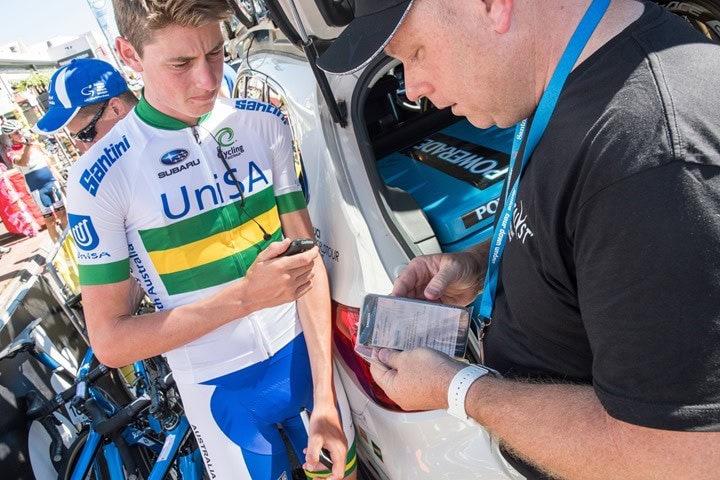
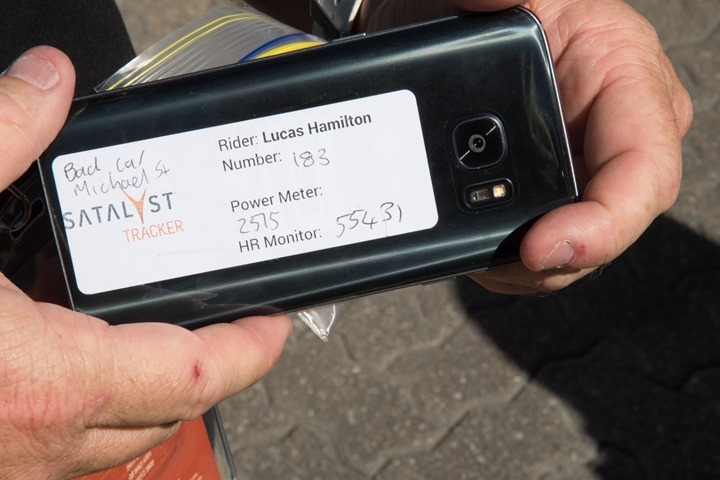
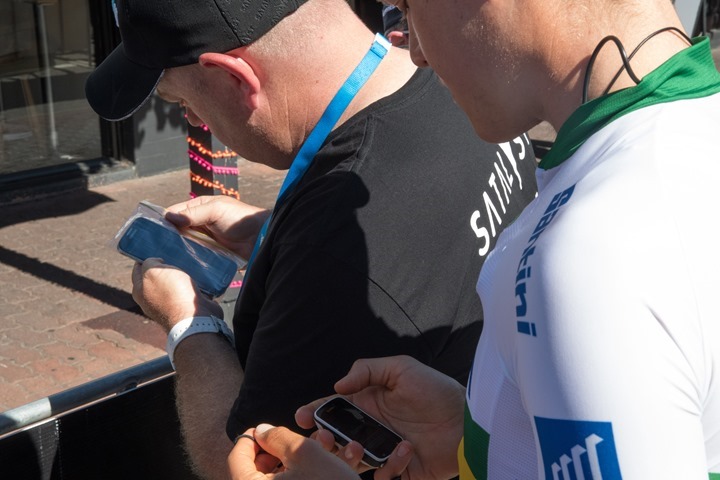

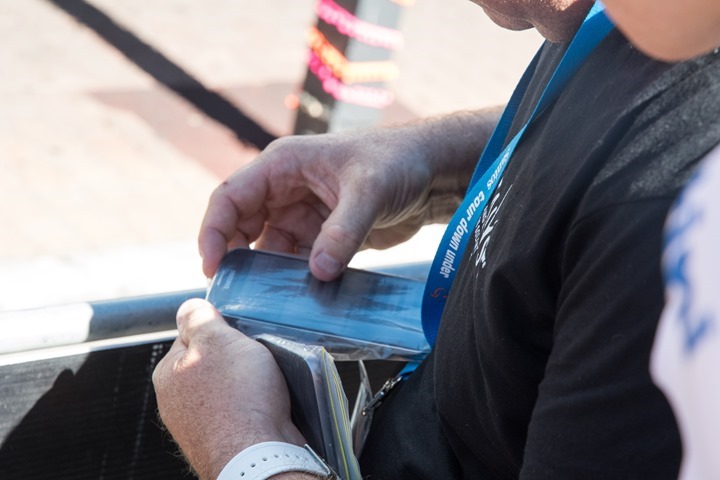
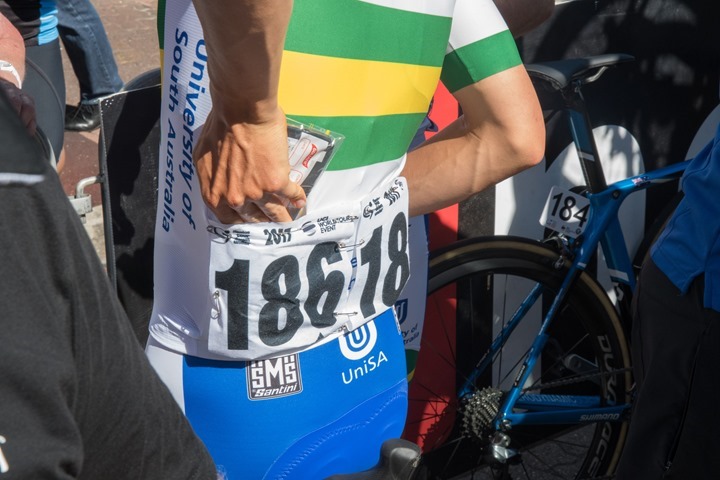
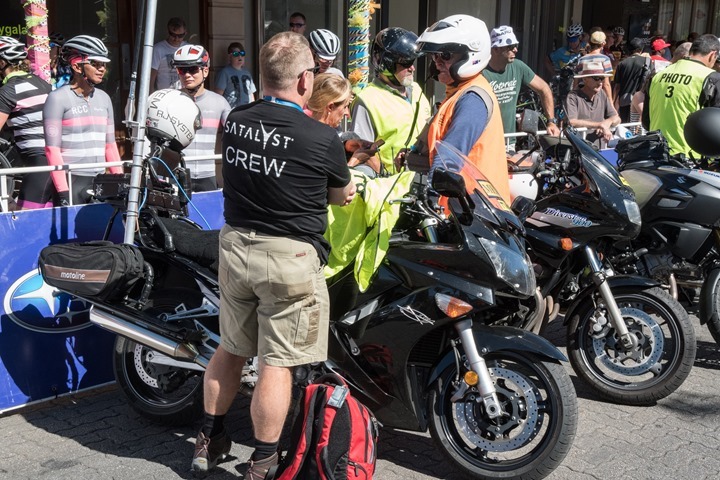
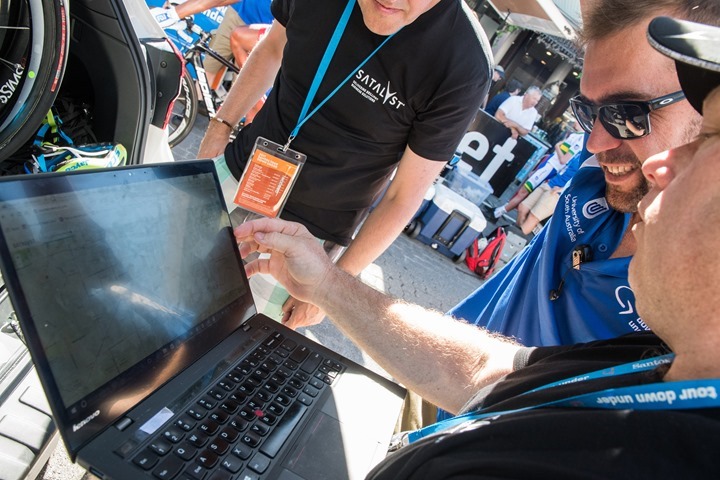
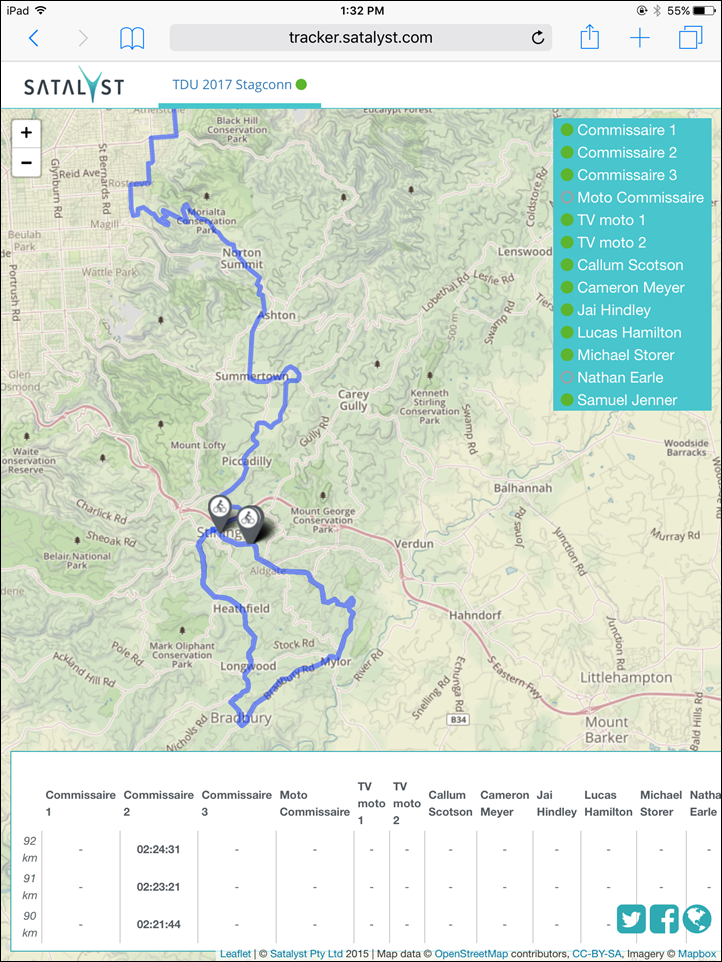
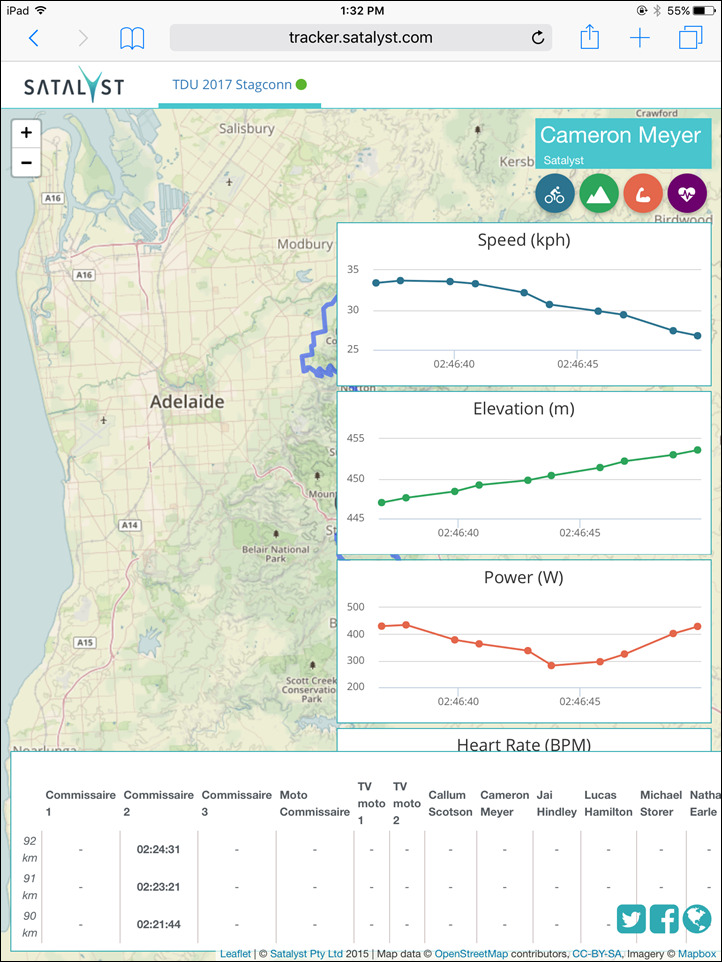
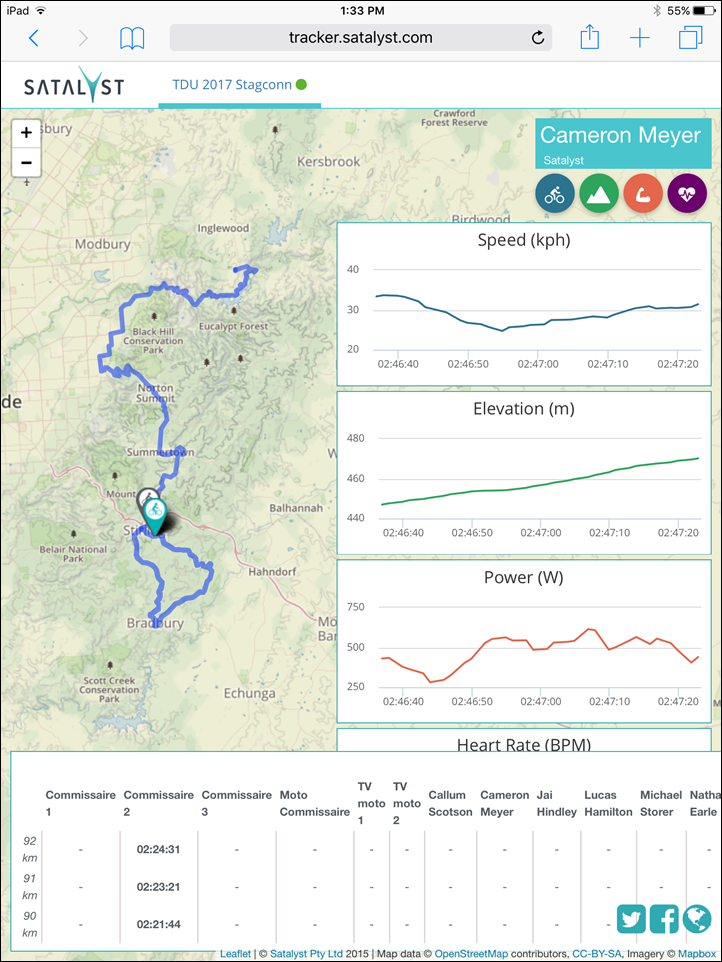





















Fascinating insights into Satalyst. Was curious about how it all worked. Would love to see the UCI rules change so we can see more of this, especially in Grand Tours. Thanks, Ray!
first
Great article, Ray !
‘Been trying for some time to find more info about live data, hoping that one day I would be able to race virtually against teams during various races or Tours, however, that info is scarce – when it even exists.
But your article brings this live data issue closer to the common folk, which only has an indoor trainer and limited after-work hours to spend riding. Way to go, Sir !
Kind regards
Mihai
Any commentary from the Satalyst team about cost Ray? Be interesting to see if this becomes more enthusiast orientated or not.
No, I asked a bit about that – but it’s definitely targeted at events right now. Meaning, they’d work an arrangement between themselves and the event organizer, and then the event would handle the handoff to you as a consumer.
Though, I think in large-scale events they could probably just over something themselves and it’d work out just fine. Meaning, a marathon, fondo, etc… whereby if they even had a booth at an event just as a general sponsor, they could probably get people signed on easy enough.
Cheers Ray.
Interesting. I guess with something new ish it’ll still be more high end driven for the time being, but hopefully it becomes consumer driven sooner rather than later!
Ps great to say G’Day briefly at the women’s crit!
“S4, S5, and S7 photos (of varying models)” -> “phones”
It is surprising that telemetry is not a given in professional cycling (or running!). No doubt something that is coming, even if UCI must change rules if need be.
Brilliant Ray, thank you. Do you think opening this to a standard in all UCI races could bring hints about doping? It is well known the level of secrecy of some riders data in big teams and I’m not clear if the reason is to hide odd/impossible metrics under “clean” conditions or if that just gives competitive advantage to teams about the condition of the rider during the race.
It could, at least in certain types of stages. I often ponder whether that’s a key reason that certain teams use oval rings – as it allows them to ‘hide’ some of that power data a bit in mystery. A few percent here, a few percent there. By using non-round rings with something like an SRM (which doesn’t support non-round rings properly), one could actually make a claim that their listed power was incorrectly high (and thus not doping)…
If sensors have the ability to provide early detection of the onset of a cold or flu, having that information would certainly be a competitive advantage. Take that a step further and grind the data through big analytics and there is a good chance at predicting the outcome of a race before it starts, or even while it is in progress barring unplanned events like flat tires. Knowing when to attack the guy on the bike next to you is part of the battle. Doping might not be the primary concern when comes to sharing data. Or at least that is one potential conspiracy theory ;-)
They’re using the same high-tech cell phone case that I do. link to media.dcrainmaker.com
I grabbed a handful of these on my way through customs at Stansted airport yesterday – perfect for long runs! :) Ideal freebies!
Call me cynical but it seems that the UCI should make usage mandatory…you know…track those motorized bicycles and abnormal wattages.
A lot of power meters won’t show the extra power. Anything crank based or pedal based won’t show it, since the power is applied either at the rear wheel or the crank axel.
If UCI wanted to prevent mechanical doping, they’d require both a DFPM and a indirect meter like the PowerPod. The indirect power meter will measure all of the power applied, while the DFPM might not. A huge discrepancy between the two would be a pretty sure sign.
I think this would also be an interesting system to mandate for motorcycles to ensure that they are keeping within safe speeds and following distances. Useful metrics that might improve the safety throughout and alleviate some questions that arise after accidents and/or fatalities in races.
Very cool – and I bet you enjoyed the little trip back in time to your previous day job! :) I dont suppose there was much they could teach you about that bit of the E2E design ?!
Thanks, very interesting, thanks for link…
I work with a friend on this kind of stuff. Looks like the key to their success so far is the dedicated phones and pre-established courses. Remove those two features and the functionality falls apart quickly. Nice write up!
Beacon calls themselves the “Official Live GPS Tracking Service of IRONMAN.” Let’s see how long they last, or will they end like MyAthlete Live.
Screw you Apple, for not putting ANT+ in my iPhone.
To be fair, I somewhat blame ANT+ for this. Years ago they had the chance, and didn’t want to pay up at the time (someone at Garmin decided against it). I suspect these days they’d consider that one of their biggest mistakes.
Interesting! So ANT has to pay Apple to implement a component of theirs into a device which Apple makes? I would’ve presumed Apple should pay ANT, just like they pay Broadcom for their WiFi chips.
ANT had the opportunity long ago to do that, but that ship has sailed…and the door has closed permanently. At this point, merely mentioning ANT+ in an Apple meeting on campus is about grounds for getting a vendor kicked out the door. Some serious bad blood there now. It wasn’t so much inserting a chip, since at the time it was the exact same chipset used for the BT stack (just like it is today), so it was really more of having it accessible to the OS/apps.
1. Thanks for elaborating.
2. Wow!
3. I still think a large smartphone outperforms any bike computer on the market today. I can customise anything to my liking, due to the vast amount of apps. I can customise fonts, fontsize, choose maps with better scale,…the list goes on. So if the iPhone won’t ‘ever’ get ANT+ I may as well do the unthinkable, and get an Android phone. Only thing missing is a square screen; which in my opinion is the best for maps: if I cycle West East I get to see the same amount of map as I see when cycling North South.
(well I suppose I could get a BB Passport, but I don’t think their App Store has that many cycling apps)
It is interesting to note that the only difference between this and Garmin Live Track is the back end integration and UI. By adding in a course and calculation for distance remaining and a UI for viewing multiple riders Garmin could easily duplicate this system for even “impromptu” race events. Plus, using a GPS enabled device would cut down on phone battery usage and could even supply data from swimming legs (albeit not live) when the phone is not near. It seems like such a no-brainer you’ve got to wonder why they haven’t done it yet. Or am I missing something?
Logically yes. But it’s funny – I literally said the same thing like 4 years ago when Garmin first introduced it on the Edge 810. And yet virtually nothing has changed in that platform (aside from the group display stuff lately on some devices, but not on the site itself). Such wasted opportunity…
All I want is a consumer facing device that plays well with races that allows: longer than 24 hour tracks (IE I shouldn’t need to figure a way to send a new link every day) for Ultra racers/randos, add a route to the track page so people know where I am headed, and backup logging of gps/ant for when my Garmin freezes or dies.
I see no advantage either in Garmin nor in this app when looking on livetracking.
The BT connection between the Edge and smartphone is sucking on my batterie and shortens the uptime of my bike computer.
Why, when every Android smartphone may do the same.
I’m using f.e. an android app called Real-Time GPS Tracker2, available in the playstore but nor for iphones!
link to greenalp.com
Realy every thing you want is possible. It’s using every kind of map, online or offline, you may put your track public or password hidden and so on.
Viewers are able to see on the map where you are and what speed you are riding. How often this information is updated and the length of the already ridden track on the map is self defined.
When I’m alone on tour my wife always now where am I and when our team is riding over a couple of days everybody can follow or meet us on the track to ride together.
You never tried it? But you should!
regards
henry
P.S.: up to now it’s possible to integrate the map with your tracking data into your own homepage how I did (password protected) or on your Facebook account!
Most electric utility AMR systems buffer data at the sensor if the collector becomes not reachable, and then forwards buffered data once the collector is available. I wonder if there was a technical limitation why this system does not do this. It can’t be storage on the cell phone. The other possibility is a design decision to leave this out due to implementation time constraints. AMR systems also have multiple collection units available, and a sensor will shift forwarding to a secondary or tertiary sensor if the primary goes away.
An option here is to use motorized follow / caravan vehicles as primary collection points. This could reduce power requirements of the mobile units, and make for more consistent data acquisition. Put a picocell / femtocell in the cars where there is good power from the engine and a decent sized ground.